This project is now in update mode. Check back regularly to see how things are progressing.
Organ ICU: Keeping Organs Alive for Transplantation
Although their campaign has concluded, if you would still like to make a donation to Organ ICU, you may always do so here.
-----------------------------------------------------------------------------------------
The Issue
More than 15,000 people are waiting for a liver transplant in the United States, but this year fewer than 7,000 will receive one. Each year approximately 20 to 40 percent of donor livers cannot be transplanted into recipients and have to be discarded because oxygen deprivation during conventional methods of storage and transport can make pre-existing tissue damage worse. Senior researcher at the University of Pittsburgh's McGowan Institute for Regenerative Medicine and liver transplant surgeon Dr. Paulo Fontes explains further in this video.
Traditionally, donor livers are preserved in ice and without oxygen for up to 12 hours until they can be connected to the recipient. The reason the donor liver is kept in ice is to try to make it stop working. If the donor liver were to continue to work without having blood and oxygen, the cells would die long before the liver could be transplanted into the recipient. If tissue damage that results from cold storage is too extensive, the organ cannot be used for transplantation.
Our Technology
Researchers from the Thomas E. Starzl Transplantation Institute at the McGowan Institute for Regenerative Medicine have developed a new system for organ preservation by combining a dual perfusion machine under subnormothermic temperatures (21˚C) with a new oxygen carrier solution that provides effective oxygenation to the organ even though it is outside of the body (ex vivo). This way the damage that comes with prolonged storage on ice can be prevented. The function of a liver can also be assessed on the machine before putting it into a recipient. Early experimental studies suggest that our surgeons may even be able to use this new technique to improve the function of organs that were previously thought to be too marginal for transplant, thereby expanding the number of donor livers available for transplant, shortening waiting times, and reducing the numbers of patients who die on the waiting list.
This technology aims to optimize donor liver quality and increase the number of transplantable donor livers. If this technology proves successful we hope to expand our research to include other organs.
The Researchers
The research team consists of members of the Thomas E. Starzl Transplantation Institute, the McGowan Institute for Regenerative Medicine, the University of Pittsburgh School of Medicine, and UPMC.
How You Can Join Our Team
We are looking for research partners who are as passionate as we are about this project and its potential to change the landscape of organ preservation. With the decline of government funding of scientific research, projects like this are increasingly reliant on people like you. We hope that you will join our transplant team by making a gift to support this important life-saving work.
In order for our machine, along with the perfusion solution, to be approved by the Food and Drug Administration so we can use it clinically, we have to prove that it works and that it is safe. That means we have to place donor livers on the machine and run tests to assess function, check oxygen delivery, monitor pressures, and ensure it is infection-free. Funds raised will be used to support research and clinical activities related to the development and improvement of machine perfusion based systems for organ preservation (e.g. liver, kidney, pancreas and intestines) and to move that research into the hospital where human patients’ lives can be saved.
If this technology proves to be as effective as we believe it will be, it can mean the difference between life and death for thousands of people on the organ donor waiting list. Please consider making your gift today!
$10
Science Student
Learn about our research and help us toward our goal. Thank you!
$25
Research Contributor
You can help this research stand out from the crowd! Thank you!
$50
Scientific Backer
Your support at this level helps us towards our goal. Thank You!
$100
Lab Assistant
Receive a signed thank you note from the research team.
$250
The Student Researcher
For you to join a group project lecture and tour with researcher (available dates: 9/11/15, 10/9/15, 11/6/15, 11/20/15)
$1,000
The Lead Researcher
For you to join a group project lecture, tour and group lunch with researcher (available dates: 9/25/15, 10/23/15)
$5,000
The Primary Investigator
For you and a guest to join a private lecture, tour and dinner with researcher




